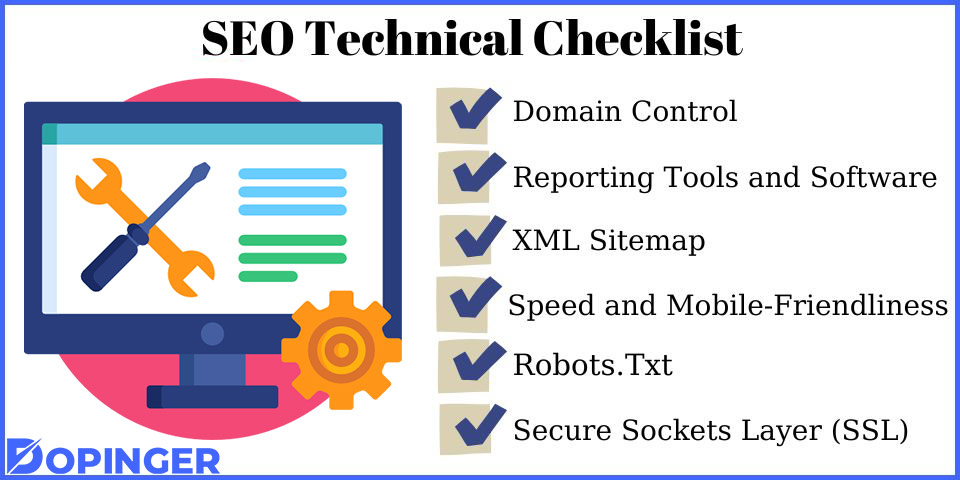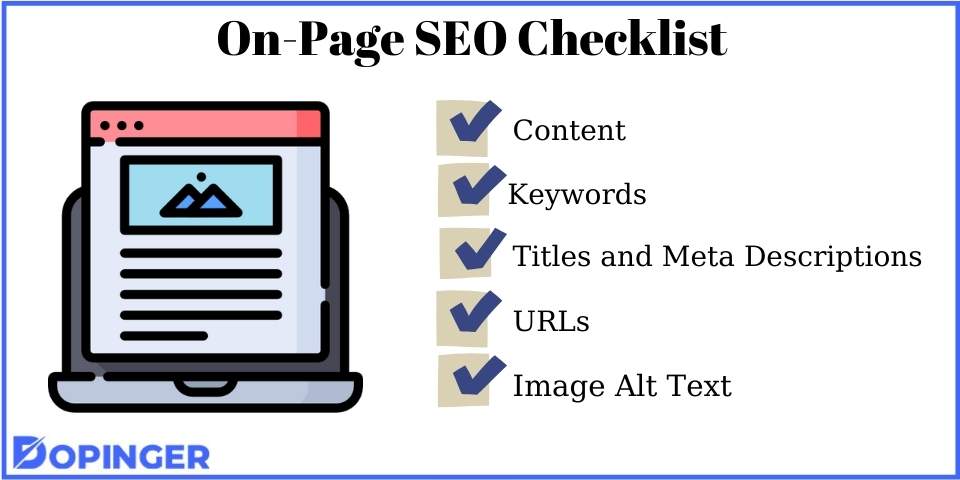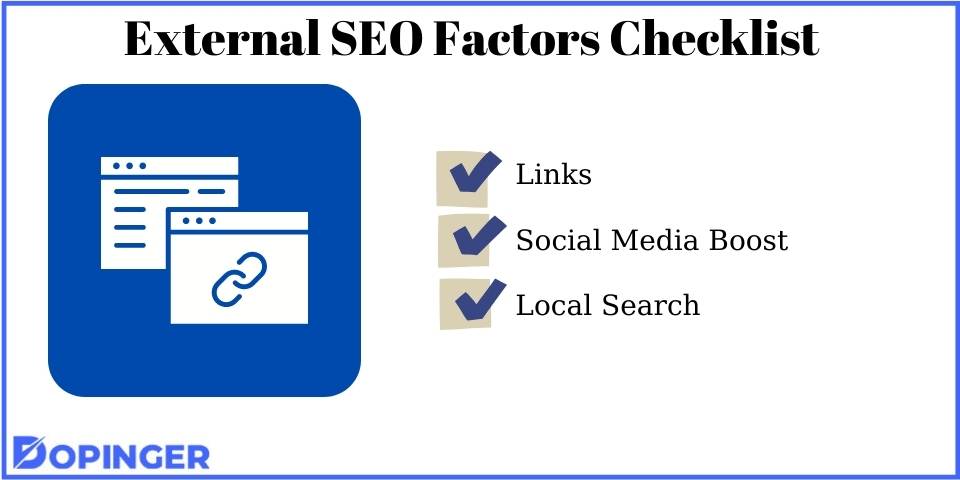This title may sound somewhat ambitious and even pretentious, but believe us, it isn’t. It’s already been a while since SEO (Search Engine Optimization) has upleveled. Now it’s much more than a matter of stashing a bunch of exact keywords in order to get a grip on search engine rankings. Remember Google’s Page Experience update last year? That was just one of the many signs indicating how complex things were bound to become. Anyone willing to deal with that complexity needs an SEO checklist. When you know exactly what to do and in which order, you increase your chances of running a website that satisfies both users and search engines. So today, let’s talk ‘organization’ and pave the way to perfection.
SEO Technical Checklist
If you are curious to know how to improve SEO results related to your site, then you need to master a few technical basics. This first step is paramount to securing the core structural aspects. That’s how (among other things) you will allow bots to crawl and index your website. So let’s see what you should include in a technical SEO checklist.

Domain Control
How many domain names do you own? If you have several of them, you need to double-check the purpose and current activity of each one. For instance, if they are redirecting to your website, we recommend 301 redirects (instead of 302 and duplicates). If, on the contrary, they are inactive at the moment, you may leave them like that. What really matters here is to offer accurate addresses to the public.
Reporting Tools and Software
Your website SEO monitoring will largely depend on these. They will ensure that you get accurate diagnostics and analytics regarding your performance. You may opt for well-known and free SEO tools such as Google Search Console, Google Analytics, and Google Tag Manager. You may also try out paid ones like GrowthBar, HockeyStack, and SEMRush (they offer different pricing plans suitable for all budgets). The best option is probably to use several of them so that you keep an eye on different parameters related to your site’s health.
XML Sitemap
Let’s not forget the architecture of your site. Your XML sitemap is basically what gives the main clues about your website content. You may picture it as a sort of index. Your best bet is probably to go for a dynamic sitemap that you can obtain via dedicated plugins. Otherwise, a static one works too.
Now speaking of architectural matters, try to keep it as organized and clean as possible. Sort your content by categories and make it easily findable by your visitors.
Speed and Mobile-Friendliness
Needless to say, these two always go hand in hand nowadays. Website SEO optimization also means that you should offer something economical in terms of time. People won’t want to waste an eternity while trying to load your site pages, right? Try to avoid heavy codes and reduce your usage of JavaScript as much as possible. Be also careful about the types of images you are using.
Make also sure that your site is easily accessible from any kind of device, especially smartphones. See how it turns out by conducting some mobile-friendliness tests like the one offered by Google itself. Bing and many others provide such tests as well.
Robots.Txt
You are responsible for giving the right instructions to search engines when it comes to investigating your website properly. In that regard, the robots.txt file is a critical component of your SEO checklist. It notifies search engine crawlers about which pages and sections of your site they should or should not index. So you want it to be as clear and precise as possible. For example, you have to make sure that it doesn’t prevent any important section (or worse, your entire site) from being analyzed and indexed. Speaking of analysis, you should also check the connection of your robots.txt file with Google Search Console and Bing Webmaster Tools. This is about giving it a sort of ‘legitimacy’, so to speak.
Secure Sockets Layer (SSL)
If you want your website to be safe for both you and your visitors, then an SSL certification is the way to go. Indeed, more and more people are legitimately precautious these days when it comes to navigation security. They won’t even bother to have a look at a site that displays a security warning or blockage right from the start. So you know what you got to do.
On-Page SEO Checklist
Moving on to the more qualitative aspects of an On-Page SEO checklist. Indeed, on-page SEO is what deals with your website content, tags, keywords, themes, and such. Caution, though: Don’t think of these as separate entities. Indeed, anyone who is looking for SEO boost strategies should adopt a more wholesome approach. As mentioned earlier, each element influences the others. So please consider the following with that mindset.

Content
Almost too obvious, isn’t it? Content is definitely one of the pillars your website will rely on. And this is where the word ‘quality’ is gaining all its importance. You need well-thought, well-written, and informative content. It should be crafted in a way to earn your visitors’ loyalty and desire to know more about you and your online activity. Even better if you can produce this type of content in sufficient quantities and regularly.
Briefly said, pay attention to your content. See if it’s relevant when compared to what you are trying to promote. Do you have well-defined themes and topics likely to draw interest to your site? Do you have a ‘story’ to tell? Ask yourself the right questions and see how the answer fits your current situation. Don’t forget that you can collaborate with content writers and copywriters if you need to do so.
Keywords
Who could talk about SEO practices without mentioning keywords? These are actually an integral part of your content. So, here again, you will have to reflect on your target audience’s potential expectations. What kind of keywords and key phrases are they most likely to use while searching for something on the internet? What do they want to know? That’s right; you must conduct market and keyword research. Once you have detected recurrent tendencies, you can start instilling the right terms into your website content. If you want to learn how to find keyword, you can read our Keyword Research Tips and Tricks article.
Titles and Meta Descriptions
We are putting these two under the same subtitle because they are hardly dissociable. You have to make them original as well as relevant. Needless to say, SEO sites can’t afford to use random titles and descriptions just for the sake of it. The objective is to make these elements match the content and general structure of the site. Moreover, people should be able to get an idea of your topic before even reading the entire page. This is possible if your titles and meta descriptions are chosen carefully. You can go for either static or dynamic ones, and it’s your call. Just make sure to make them purposeful and contextual.
URLs
In other words, your ‘address’. You don’t want people to land in the wrong place or get confused, do you? If you absolutely prefer using gibberish-like URLs, that’s your choice by all means. They can still get indexed anyway. However, you can also opt for well-structured URLs that give useful information right from the start. For instance, those with relevant keywords and topic indications tend to work pretty fine.
Image Alt Text
We have already mentioned how important it is to tailor your images properly to help your website speed. The same goes for image descriptions, namely alt descriptions or alt tags. That’s what provides the necessary information about your visuals to search engines. So once again, this is something for which you might want to use the right keywords. Appropriate alt tags also improve the accessibility of your website, especially for people using screen-readers.
External SEO Factors Checklist
No way to improve SEO without taking external factors into account. That’s what this part of your SEO checklist will be about. Your website is not a hermetic box closed to the outside world. There are, on the contrary, a few factors to consider here:

Links
No escape possible: You definitely need inbound links (aka backlinks) from authoritative and reliable websites. That kind of promotion can do wonders for your website ranking. Once again, you can sense the importance of having high-quality content to which others might want to redirect their public. Keep in constant touch with potential link providers. Sustain your efforts, and don’t take anything for granted. For example, some of your links may get lost in time. You will need to reclaim them. Similarly, track any unlinked mention of your website and try to convince the source to replace it with a link. Focus on getting backlinks from authoritative websites and also benefit from guest posting.
Your efforts should also be focused on keeping this link traffic as clean as possible. For example, according to Google, the Penalty Risk module in SEO SpyGlass can alarm you about potentially spammy links. You will thus need to remove them.
Social Media Boost
Yes, your social media accounts can greatly help improve your SEO. They are undoubtedly external resources that can act as bridges. In other terms, any of your social media pages can be used to link to your site. Not to mention other networking strategies (stories, etc.) that can support your promotional efforts. Plus, those platforms can allow you to keep an eye on your competitors’ activities and even get an additional source of inspiration.
Local Search
You have to make it real. What do we mean? Well, people should be able to locate and find you, especially if you are running a physical business (e.g., a store). So, to begin with, you should check the accuracy of your business name, phone number, address, and such in all related directories. Browse also the list of websites that are likely to mention your business and contact them if any correction is needed.
If you want to be more visible to your potential customers, consider getting local SEO services.
Conclusion
As you could notice in our article, an SEO checklist acts as an auditing tool for various aspects of your website. It gives you clues on how to increase SEO efficiency while keeping everything up to date. It’s also a step-by-step approach that reminds you to prioritize certain elements over others, depending on your situation. In that regard, it’s also a helpful tool even for beginners.
If you think you need professional help with your website, consider getting SEO consulting services from an SEO agency!
Frequently Asked Questions About
As we said, an SEO checklist goes way beyond keyword monitoring. However, it’s always a good idea to focus on ‘monetizable’ keywords and investigate search intents and the most commonly used keywords within search queries. You should also try to work with a keyword map and track long-tail keyword variations. Dedicated instruments such as Google Keyword Planner or SEMrush Keyword Magic Tool can help you out with these. Also, don’t forget to conduct a competitor analysis.
It’s a specific kind of keyword that tends to be rather complex. They are often more detailed and somewhat longer than simple keywords. So we may venture to say that people using them have a more precise idea of what they are looking for. Although they are not used very often because they are extremely niche-specific, they can yield great results if you analyze and adopt them correctly.
301 redirects are usually the easiest way to overcome the problem. Make them redirect to the primary version of your website, preferably the https://www.yoursite.com form.
It’s not an absolute obligation. Nevertheless, this protocol is usually more efficient when it comes to protecting data gathered from website visitors. Like what? Payment information, passwords, and other confidential information. So HTTPS is one of the prerequisites to offering a secured web experience to your audience.
By all means. Schema markups will increase the chances of getting your content displayed in a richer and more comprehensive mode. As a result, your click-through rates and thus traffic can also increase.





No comments to show.